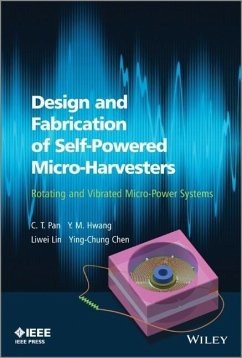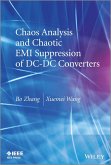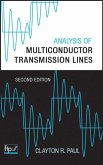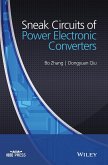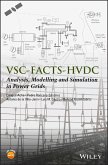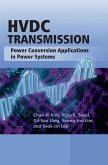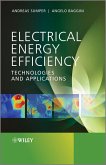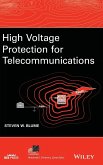C. T. Pan, Y. M. Hwang, Liwei Lin, Ying-Chung Chen
Design and Fabrication of Self-Powered Micro-Harvesters
Rotating and Vibrating Micro-Power Systems
C. T. Pan, Y. M. Hwang, Liwei Lin, Ying-Chung Chen
Design and Fabrication of Self-Powered Micro-Harvesters
Rotating and Vibrating Micro-Power Systems
- Gebundenes Buch
- Merkliste
- Auf die Merkliste
- Bewerten Bewerten
- Teilen
- Produkt teilen
- Produkterinnerung
- Produkterinnerung
Presents the latest methods for designing and fabricating self-powered micro-generators and energy harvester systems
Design and Fabrication of Self-Powered Micro-Harvesters introduces the latest trends of self-powered generators and energy harvester systems, including the design, analysis and fabrication of micro power systems. Presented in four distinct parts, the authors explore the design and fabrication of: vibration-induced electromagnetic micro-generators; rotary electromagnetic micro-generators; flexible piezo-micro-generator with various widths; and PVDF electrospunpiezo-energy with…mehr
Andere Kunden interessierten sich auch für
![Chaos Analysis and Chaotic EMI Suppression of DC-DC Converters Chaos Analysis and Chaotic EMI Suppression of DC-DC Converters]() Bo ZhangChaos Analysis and Chaotic EMI Suppression of DC-DC Converters163,99 €
Bo ZhangChaos Analysis and Chaotic EMI Suppression of DC-DC Converters163,99 €![Analysis of Multiconductor Transmission Lines Analysis of Multiconductor Transmission Lines]() Clayton R. PaulAnalysis of Multiconductor Transmission Lines264,99 €
Clayton R. PaulAnalysis of Multiconductor Transmission Lines264,99 €![Sneak Circuits of Power Electronic Converters Sneak Circuits of Power Electronic Converters]() Bo ZhangSneak Circuits of Power Electronic Converters203,99 €
Bo ZhangSneak Circuits of Power Electronic Converters203,99 €![Vsc-Facts-Hvdc Vsc-Facts-Hvdc]() Enrique E. AchaVsc-Facts-Hvdc154,99 €
Enrique E. AchaVsc-Facts-Hvdc154,99 €![Hvdc Transmission Hvdc Transmission]() Chan-Ki KimHvdc Transmission193,99 €
Chan-Ki KimHvdc Transmission193,99 €![Electrical Energy Efficiency Electrical Energy Efficiency]() Andreas M. SumperElectrical Energy Efficiency132,99 €
Andreas M. SumperElectrical Energy Efficiency132,99 €![High Voltage Protection for Telecommunications High Voltage Protection for Telecommunications]() Steven W. BlumeHigh Voltage Protection for Telecommunications124,99 €
Steven W. BlumeHigh Voltage Protection for Telecommunications124,99 €-
-
-
Presents the latest methods for designing and fabricating self-powered micro-generators and energy harvester systems
Design and Fabrication of Self-Powered Micro-Harvesters introduces the latest trends of self-powered generators and energy harvester systems, including the design, analysis and fabrication of micro power systems. Presented in four distinct parts, the authors explore the design and fabrication of: vibration-induced electromagnetic micro-generators; rotary electromagnetic micro-generators; flexible piezo-micro-generator with various widths; and PVDF electrospunpiezo-energy with interdigital electrode.
Focusing on the latest developments of self-powered microgenerators such as micro rotary with LTCC and filament winding method, flexible substrate, and piezo fiber-typed microgenerator with sound organization, the fabrication processes involved in MEMS and nanotechnology are introduced chapter by chapter. In addition, analytical solutions are developed for each generator to help the reader to understand the fundamentals of physical phenomena. Fully illustrated throughout and of a high technical specification, it is written in an accessible style to provide an essential reference for industry and academic researchers.
Comprehensive treatment of the newer harvesting devices including vibration-induced and rotary electromagnetic microgenerators, polyvinylidene fluoride (PVDF) nanoscale/microscale fiber, and piezo-micro-generators
Presents innovative technologies including LTCC (low temperature co-fire ceramic) processes, and PCB (printed circuit board) processes
Offers interdisciplinary interest in MEMS/NEMS technologies, green energy applications, bio-related sensors, actuators and generators
Presented in a readable style describing the fundamentals, applications and explanations of micro-harvesters, with full illustration
Hinweis: Dieser Artikel kann nur an eine deutsche Lieferadresse ausgeliefert werden.
Design and Fabrication of Self-Powered Micro-Harvesters introduces the latest trends of self-powered generators and energy harvester systems, including the design, analysis and fabrication of micro power systems. Presented in four distinct parts, the authors explore the design and fabrication of: vibration-induced electromagnetic micro-generators; rotary electromagnetic micro-generators; flexible piezo-micro-generator with various widths; and PVDF electrospunpiezo-energy with interdigital electrode.
Focusing on the latest developments of self-powered microgenerators such as micro rotary with LTCC and filament winding method, flexible substrate, and piezo fiber-typed microgenerator with sound organization, the fabrication processes involved in MEMS and nanotechnology are introduced chapter by chapter. In addition, analytical solutions are developed for each generator to help the reader to understand the fundamentals of physical phenomena. Fully illustrated throughout and of a high technical specification, it is written in an accessible style to provide an essential reference for industry and academic researchers.
Comprehensive treatment of the newer harvesting devices including vibration-induced and rotary electromagnetic microgenerators, polyvinylidene fluoride (PVDF) nanoscale/microscale fiber, and piezo-micro-generators
Presents innovative technologies including LTCC (low temperature co-fire ceramic) processes, and PCB (printed circuit board) processes
Offers interdisciplinary interest in MEMS/NEMS technologies, green energy applications, bio-related sensors, actuators and generators
Presented in a readable style describing the fundamentals, applications and explanations of micro-harvesters, with full illustration
Hinweis: Dieser Artikel kann nur an eine deutsche Lieferadresse ausgeliefert werden.
Produktdetails
- Produktdetails
- Verlag: Wiley & Sons
- 1. Auflage
- Seitenzahl: 320
- Erscheinungstermin: 23. Juni 2014
- Englisch
- Abmessung: 244mm x 170mm x 20mm
- Gewicht: 576g
- ISBN-13: 9781118487792
- ISBN-10: 1118487796
- Artikelnr.: 39736294
- Herstellerkennzeichnung
- Libri GmbH
- Europaallee 1
- 36244 Bad Hersfeld
- 06621 890
- Verlag: Wiley & Sons
- 1. Auflage
- Seitenzahl: 320
- Erscheinungstermin: 23. Juni 2014
- Englisch
- Abmessung: 244mm x 170mm x 20mm
- Gewicht: 576g
- ISBN-13: 9781118487792
- ISBN-10: 1118487796
- Artikelnr.: 39736294
- Herstellerkennzeichnung
- Libri GmbH
- Europaallee 1
- 36244 Bad Hersfeld
- 06621 890
C. T. Pan National Sun Yat-Sen University, Taiwan Y. M. Hwang National Sun Yat-Sen University, Taiwan Liwei Lin University of California, Berkeley, USA Ying-Chung Chen National Sun Yat-Sen University, Taiwan
About the Authors xi
Preface xiii
Acknowledgments xv
1 Introduction 1
1.1 Background 1
1.2 Energy Harvesters 2
1.2.1 Piezoelectric ZnO Energy Harvester 3
1.2.2 Vibrational Electromagnetic Generators 3
1.2.3 Rotary Electromagnetic Generators 4
1.2.4 NFES Piezoelectric PVDF Energy Harvester 4
1.3 Overview 5
2 Design and Fabrication of Flexible Piezoelectric Generators Based on ZnO
Thin Films 7
2.1 Introduction 7
2.2 Characterization and Theoretical Analysis of Flexible ZnO-Based
Piezoelectric Harvesters 10
2.2.1 Vibration Energy Conversion Model of Film-Based Flexible
Piezoelectric Energy Harvester 10
2.2.2 Piezoelectricity and Polarity Test of Piezoelectric ZnO Thin Film 12
2.2.3 Optimal Thickness of PET Substrate 15
2.2.4 Model Solution of Cantilever Plate Equation 15
2.2.5 Vibration-Induced Electric Potential and Electric Power 18
2.2.6 Static Analysis to Calculate the Optimal Thickness of the PET
Substrate 19
2.2.7 Model Analysis and Harmonic Analysis 21
2.2.8 Results of Model Analysis and Harmonic Analysis 23
2.3 The Fabrication of Flexible Piezoelectric ZnO Harvesters on PET
Substrates 27
2.3.1 Bonding Process to Fabricate UV-Curable Resin Lump Structures on PET
Substrates 27
2.3.2 Near-Field Electro-Spinning with Stereolithography Technique to
Directly Write 3D UV-Curable Resin Patterns on PET Substrates 29
2.3.3 Sputtering of Al and ITO Conductive Thin Films on PET Substrates 29
2.3.4 Deposition of Piezoelectric ZnO Thin Films by Using RF Magnetron
Sputtering 31
2.3.5 Testing a Single Energy Harvester under Resonant and Non-Resonant
Conditions 34
2.3.6 Application of ZnO/PET-Based Generator to Flash Signal LED Module 39
2.3.7 Design and Performance of a Broad Bandwidth Energy Harvesting System
40
2.4 Fabrication and Performance of Flexible ZnO/SUS304-Based Piezoelectric
Generators 48
2.4.1 Deposition of Piezoelectric ZnO Thin Films on Stainless Steel
Substrates 48
2.4.2 Single-Sided ZnO/SUS304-Based Flexible Piezoelectric Generator 50
2.4.3 Double-Sided ZnO/SUS304-Based Flexible Piezoelectric Generator 51
2.4.4 Characterization of ZnO/SUS304-Based Flexible Piezoelectric
Generators 52
2.4.5 Structural and Morphological Properties of Piezoelectric ZnO Thin
Films on Stainless Steel Substrates 54
2.4.6 Analysis of Adhesion of ZnO Thin Films on Stainless Steel Substrates
56
2.4.7 Electrical Properties of Single-Sided ZnO/SUS304-Based Flexible
Piezoelectric Generator 59
2.4.8 Characterization of Double-Sided ZnO/SUS304-Based Flexible
Piezoelectric Generator: Analysis and Modification of Back Surface of
SUS304 61
2.4.9 Electrical Properties of Double-Sided ZnO/SUS304-Based Piezoelectric
Generator 63
2.5 Summary 66
References 67
3 Design and Fabrication of Vibration-Induced Electromagnetic
Microgenerators 71
3.1 Introduction 71
3.2 Comparisons between MCTG and SMTG 74
3.2.1 Magnetic Core-Type Generator (MCTG) 74
3.2.2 Sided Magnet-Type Generator (SMTG) 76
3.3 Analysis of Electromagnetic Vibration-Induced Microgenerators 76
3.3.1 Design of Electromagnetic Vibration-Induced Microgenerators 77
3.3.2 Analysis Mode of the Microvibration Structure 78
3.3.3 Analysis Mode of Magnetic Field 81
3.3.4 Evaluation of Various Parameters of Power Output 84
3.4 Analytical Results and Discussion 88
3.4.1 Analysis of Bending Stress within the Supporting Beam of the Spiral
Microspring 90
3.4.2 Finite Element Models for Magnetic Density Distribution 93
3.4.3 Power Output Evaluation 97
3.5 Fabrication of Microcoil for Microgenerator 103
3.5.1 Microspring and Induction Coil 103
3.5.2 Microspring and Magnet 105
3.6 Tests and Experiments 106
3.6.1 Measurement System 106
3.6.2 Measurement Results and Discussion 107
3.6.3 Comparison between Measured Results and Analytical Values 110
3.7 Conclusions 112
3.7.1 Analysis of Microgenerators and Vibration Mode and Simulation of the
Magnetic Field 112
3.7.2 Fabrication of LTCC Microsensor 112
3.7.3 Measurement and Analysis Results 113
3.8 Summary 113
References 114
4 Design and Fabrication of Rotary Electromagnetic Microgenerator 117
4.1 Introduction 117
4.1.1 Piezoelectric, Thermoelectric, and Electrostatic Generators 119
4.1.2 Vibrational Electromagnetic Generators 119
4.1.3 Rotary Electromagnetic Generators 120
4.1.4 Generator Processes 121
4.1.5 Lithographie Galvanoformung Abformung Process 122
4.1.6 Winding Processes 123
4.1.7 LTCC 123
4.1.8 Printed Circuit Board Processes 124
4.1.9 Finite-Element Simulation and Analytical Solutions 126
4.2 Case 1: Winding Generator 126
4.2.1 Design 127
4.2.2 Analytical Formulation 132
4.2.3 Simulation 134
4.2.4 Fabrication Process 138
4.2.5 Results and Discussion (1) 139
4.2.6 Results and Discussion (2) 142
4.3 Case 2: LTCC Generator 146
4.3.1 Simulation 147
4.3.2 Analytical Theorem of Microgenerator Electromagnetism 148
4.3.3 Simplification 152
4.3.4 Analysis of Vector Magnetic Potential 153
4.3.5 Analytical Solutions for Power Generation 154
4.4 Fabrication 157
4.4.1 LTCC Process 157
4.4.2 Magnet Process 159
4.4.3 Measurement Set-up 160
4.5 Results and Discussion 162
4.5.1 Design 162
4.5.2 Analytical Solutions 168
4.5.3 Fabrication 170
References 178
5 Design and Fabrication of Electrospun PVDF Piezo-Energy Harvesters 183
5.1 Introduction 183
5.2 Fundamentals of Electrospinning Technology 187
5.2.1 Introduction to Electrospinning 187
5.2.2 Alignment and Assembly of Nanofibers 190
5.3 Near-Field Electrospinning 191
5.3.1 Introduction and Background 191
5.3.2 Principles of Operation 194
5.3.3 Process and Experiment 196
5.3.4 Summary 202
5.4 Continuous NFES 202
5.4.1 Introduction and Background 202
5.4.2 Principles of Operation 202
5.4.3 Controllability and Continuity 205
5.4.4 Process Characterization 208
5.4.5 Summary 211
5.5 Direct-Write Piezoelectric Nanogenerator 211
5.5.1 Introduction and Background 211
5.5.2 Polyvinylidene Fluoride 212
5.5.3 Theoretical Studies for Realization of Electrospun PVDF Nanofibers
213
5.5.4 Electrospinning of PVDF Nanofibers 216
5.5.5 Detailed Discussion of Process Parameters 219
5.5.6 Experimental Realization of PVDF Nanogenerator 223
5.5.7 Summary 241
5.6 Materials, Structure, and Operation of Nanogenerator with Future
Prospects 241
5.6.1 Material and Structural Characteristics 241
5.6.2 Operation of Nanogenerator 243
5.6.3 Summary and Future Prospects 248
5.7 Case Study: Large-Array Electrospun PVDF Nanogenerators on a Flexible
Substrate 248
5.7.1 Introduction and Background 248
5.7.2 Working Principle 249
5.7.3 Device Fabrication 249
5.7.4 Experimental Results 251
5.7.5 Summary 252
5.8 Conclusion 253
5.8.1 Near-Field Electrospinning 253
5.8.2 Continuous Near-Field Electrospinning 254
5.8.3 Direct-Write Piezoelectric PVDF 254
5.9 Future Directions 255
5.9.1 NFES Integrated Nanofiber Sensors 255
5.9.2 NFES One-Dimensional Sub-Wavelength Waveguide 256
5.9.3 NFES Biological Applications 257
5.9.4 Direct-Write Piezoelectric PVDF Nanogenerators 258
References 258
Index 265
Preface xiii
Acknowledgments xv
1 Introduction 1
1.1 Background 1
1.2 Energy Harvesters 2
1.2.1 Piezoelectric ZnO Energy Harvester 3
1.2.2 Vibrational Electromagnetic Generators 3
1.2.3 Rotary Electromagnetic Generators 4
1.2.4 NFES Piezoelectric PVDF Energy Harvester 4
1.3 Overview 5
2 Design and Fabrication of Flexible Piezoelectric Generators Based on ZnO
Thin Films 7
2.1 Introduction 7
2.2 Characterization and Theoretical Analysis of Flexible ZnO-Based
Piezoelectric Harvesters 10
2.2.1 Vibration Energy Conversion Model of Film-Based Flexible
Piezoelectric Energy Harvester 10
2.2.2 Piezoelectricity and Polarity Test of Piezoelectric ZnO Thin Film 12
2.2.3 Optimal Thickness of PET Substrate 15
2.2.4 Model Solution of Cantilever Plate Equation 15
2.2.5 Vibration-Induced Electric Potential and Electric Power 18
2.2.6 Static Analysis to Calculate the Optimal Thickness of the PET
Substrate 19
2.2.7 Model Analysis and Harmonic Analysis 21
2.2.8 Results of Model Analysis and Harmonic Analysis 23
2.3 The Fabrication of Flexible Piezoelectric ZnO Harvesters on PET
Substrates 27
2.3.1 Bonding Process to Fabricate UV-Curable Resin Lump Structures on PET
Substrates 27
2.3.2 Near-Field Electro-Spinning with Stereolithography Technique to
Directly Write 3D UV-Curable Resin Patterns on PET Substrates 29
2.3.3 Sputtering of Al and ITO Conductive Thin Films on PET Substrates 29
2.3.4 Deposition of Piezoelectric ZnO Thin Films by Using RF Magnetron
Sputtering 31
2.3.5 Testing a Single Energy Harvester under Resonant and Non-Resonant
Conditions 34
2.3.6 Application of ZnO/PET-Based Generator to Flash Signal LED Module 39
2.3.7 Design and Performance of a Broad Bandwidth Energy Harvesting System
40
2.4 Fabrication and Performance of Flexible ZnO/SUS304-Based Piezoelectric
Generators 48
2.4.1 Deposition of Piezoelectric ZnO Thin Films on Stainless Steel
Substrates 48
2.4.2 Single-Sided ZnO/SUS304-Based Flexible Piezoelectric Generator 50
2.4.3 Double-Sided ZnO/SUS304-Based Flexible Piezoelectric Generator 51
2.4.4 Characterization of ZnO/SUS304-Based Flexible Piezoelectric
Generators 52
2.4.5 Structural and Morphological Properties of Piezoelectric ZnO Thin
Films on Stainless Steel Substrates 54
2.4.6 Analysis of Adhesion of ZnO Thin Films on Stainless Steel Substrates
56
2.4.7 Electrical Properties of Single-Sided ZnO/SUS304-Based Flexible
Piezoelectric Generator 59
2.4.8 Characterization of Double-Sided ZnO/SUS304-Based Flexible
Piezoelectric Generator: Analysis and Modification of Back Surface of
SUS304 61
2.4.9 Electrical Properties of Double-Sided ZnO/SUS304-Based Piezoelectric
Generator 63
2.5 Summary 66
References 67
3 Design and Fabrication of Vibration-Induced Electromagnetic
Microgenerators 71
3.1 Introduction 71
3.2 Comparisons between MCTG and SMTG 74
3.2.1 Magnetic Core-Type Generator (MCTG) 74
3.2.2 Sided Magnet-Type Generator (SMTG) 76
3.3 Analysis of Electromagnetic Vibration-Induced Microgenerators 76
3.3.1 Design of Electromagnetic Vibration-Induced Microgenerators 77
3.3.2 Analysis Mode of the Microvibration Structure 78
3.3.3 Analysis Mode of Magnetic Field 81
3.3.4 Evaluation of Various Parameters of Power Output 84
3.4 Analytical Results and Discussion 88
3.4.1 Analysis of Bending Stress within the Supporting Beam of the Spiral
Microspring 90
3.4.2 Finite Element Models for Magnetic Density Distribution 93
3.4.3 Power Output Evaluation 97
3.5 Fabrication of Microcoil for Microgenerator 103
3.5.1 Microspring and Induction Coil 103
3.5.2 Microspring and Magnet 105
3.6 Tests and Experiments 106
3.6.1 Measurement System 106
3.6.2 Measurement Results and Discussion 107
3.6.3 Comparison between Measured Results and Analytical Values 110
3.7 Conclusions 112
3.7.1 Analysis of Microgenerators and Vibration Mode and Simulation of the
Magnetic Field 112
3.7.2 Fabrication of LTCC Microsensor 112
3.7.3 Measurement and Analysis Results 113
3.8 Summary 113
References 114
4 Design and Fabrication of Rotary Electromagnetic Microgenerator 117
4.1 Introduction 117
4.1.1 Piezoelectric, Thermoelectric, and Electrostatic Generators 119
4.1.2 Vibrational Electromagnetic Generators 119
4.1.3 Rotary Electromagnetic Generators 120
4.1.4 Generator Processes 121
4.1.5 Lithographie Galvanoformung Abformung Process 122
4.1.6 Winding Processes 123
4.1.7 LTCC 123
4.1.8 Printed Circuit Board Processes 124
4.1.9 Finite-Element Simulation and Analytical Solutions 126
4.2 Case 1: Winding Generator 126
4.2.1 Design 127
4.2.2 Analytical Formulation 132
4.2.3 Simulation 134
4.2.4 Fabrication Process 138
4.2.5 Results and Discussion (1) 139
4.2.6 Results and Discussion (2) 142
4.3 Case 2: LTCC Generator 146
4.3.1 Simulation 147
4.3.2 Analytical Theorem of Microgenerator Electromagnetism 148
4.3.3 Simplification 152
4.3.4 Analysis of Vector Magnetic Potential 153
4.3.5 Analytical Solutions for Power Generation 154
4.4 Fabrication 157
4.4.1 LTCC Process 157
4.4.2 Magnet Process 159
4.4.3 Measurement Set-up 160
4.5 Results and Discussion 162
4.5.1 Design 162
4.5.2 Analytical Solutions 168
4.5.3 Fabrication 170
References 178
5 Design and Fabrication of Electrospun PVDF Piezo-Energy Harvesters 183
5.1 Introduction 183
5.2 Fundamentals of Electrospinning Technology 187
5.2.1 Introduction to Electrospinning 187
5.2.2 Alignment and Assembly of Nanofibers 190
5.3 Near-Field Electrospinning 191
5.3.1 Introduction and Background 191
5.3.2 Principles of Operation 194
5.3.3 Process and Experiment 196
5.3.4 Summary 202
5.4 Continuous NFES 202
5.4.1 Introduction and Background 202
5.4.2 Principles of Operation 202
5.4.3 Controllability and Continuity 205
5.4.4 Process Characterization 208
5.4.5 Summary 211
5.5 Direct-Write Piezoelectric Nanogenerator 211
5.5.1 Introduction and Background 211
5.5.2 Polyvinylidene Fluoride 212
5.5.3 Theoretical Studies for Realization of Electrospun PVDF Nanofibers
213
5.5.4 Electrospinning of PVDF Nanofibers 216
5.5.5 Detailed Discussion of Process Parameters 219
5.5.6 Experimental Realization of PVDF Nanogenerator 223
5.5.7 Summary 241
5.6 Materials, Structure, and Operation of Nanogenerator with Future
Prospects 241
5.6.1 Material and Structural Characteristics 241
5.6.2 Operation of Nanogenerator 243
5.6.3 Summary and Future Prospects 248
5.7 Case Study: Large-Array Electrospun PVDF Nanogenerators on a Flexible
Substrate 248
5.7.1 Introduction and Background 248
5.7.2 Working Principle 249
5.7.3 Device Fabrication 249
5.7.4 Experimental Results 251
5.7.5 Summary 252
5.8 Conclusion 253
5.8.1 Near-Field Electrospinning 253
5.8.2 Continuous Near-Field Electrospinning 254
5.8.3 Direct-Write Piezoelectric PVDF 254
5.9 Future Directions 255
5.9.1 NFES Integrated Nanofiber Sensors 255
5.9.2 NFES One-Dimensional Sub-Wavelength Waveguide 256
5.9.3 NFES Biological Applications 257
5.9.4 Direct-Write Piezoelectric PVDF Nanogenerators 258
References 258
Index 265
About the Authors xi
Preface xiii
Acknowledgments xv
1 Introduction 1
1.1 Background 1
1.2 Energy Harvesters 2
1.2.1 Piezoelectric ZnO Energy Harvester 3
1.2.2 Vibrational Electromagnetic Generators 3
1.2.3 Rotary Electromagnetic Generators 4
1.2.4 NFES Piezoelectric PVDF Energy Harvester 4
1.3 Overview 5
2 Design and Fabrication of Flexible Piezoelectric Generators Based on ZnO
Thin Films 7
2.1 Introduction 7
2.2 Characterization and Theoretical Analysis of Flexible ZnO-Based
Piezoelectric Harvesters 10
2.2.1 Vibration Energy Conversion Model of Film-Based Flexible
Piezoelectric Energy Harvester 10
2.2.2 Piezoelectricity and Polarity Test of Piezoelectric ZnO Thin Film 12
2.2.3 Optimal Thickness of PET Substrate 15
2.2.4 Model Solution of Cantilever Plate Equation 15
2.2.5 Vibration-Induced Electric Potential and Electric Power 18
2.2.6 Static Analysis to Calculate the Optimal Thickness of the PET
Substrate 19
2.2.7 Model Analysis and Harmonic Analysis 21
2.2.8 Results of Model Analysis and Harmonic Analysis 23
2.3 The Fabrication of Flexible Piezoelectric ZnO Harvesters on PET
Substrates 27
2.3.1 Bonding Process to Fabricate UV-Curable Resin Lump Structures on PET
Substrates 27
2.3.2 Near-Field Electro-Spinning with Stereolithography Technique to
Directly Write 3D UV-Curable Resin Patterns on PET Substrates 29
2.3.3 Sputtering of Al and ITO Conductive Thin Films on PET Substrates 29
2.3.4 Deposition of Piezoelectric ZnO Thin Films by Using RF Magnetron
Sputtering 31
2.3.5 Testing a Single Energy Harvester under Resonant and Non-Resonant
Conditions 34
2.3.6 Application of ZnO/PET-Based Generator to Flash Signal LED Module 39
2.3.7 Design and Performance of a Broad Bandwidth Energy Harvesting System
40
2.4 Fabrication and Performance of Flexible ZnO/SUS304-Based Piezoelectric
Generators 48
2.4.1 Deposition of Piezoelectric ZnO Thin Films on Stainless Steel
Substrates 48
2.4.2 Single-Sided ZnO/SUS304-Based Flexible Piezoelectric Generator 50
2.4.3 Double-Sided ZnO/SUS304-Based Flexible Piezoelectric Generator 51
2.4.4 Characterization of ZnO/SUS304-Based Flexible Piezoelectric
Generators 52
2.4.5 Structural and Morphological Properties of Piezoelectric ZnO Thin
Films on Stainless Steel Substrates 54
2.4.6 Analysis of Adhesion of ZnO Thin Films on Stainless Steel Substrates
56
2.4.7 Electrical Properties of Single-Sided ZnO/SUS304-Based Flexible
Piezoelectric Generator 59
2.4.8 Characterization of Double-Sided ZnO/SUS304-Based Flexible
Piezoelectric Generator: Analysis and Modification of Back Surface of
SUS304 61
2.4.9 Electrical Properties of Double-Sided ZnO/SUS304-Based Piezoelectric
Generator 63
2.5 Summary 66
References 67
3 Design and Fabrication of Vibration-Induced Electromagnetic
Microgenerators 71
3.1 Introduction 71
3.2 Comparisons between MCTG and SMTG 74
3.2.1 Magnetic Core-Type Generator (MCTG) 74
3.2.2 Sided Magnet-Type Generator (SMTG) 76
3.3 Analysis of Electromagnetic Vibration-Induced Microgenerators 76
3.3.1 Design of Electromagnetic Vibration-Induced Microgenerators 77
3.3.2 Analysis Mode of the Microvibration Structure 78
3.3.3 Analysis Mode of Magnetic Field 81
3.3.4 Evaluation of Various Parameters of Power Output 84
3.4 Analytical Results and Discussion 88
3.4.1 Analysis of Bending Stress within the Supporting Beam of the Spiral
Microspring 90
3.4.2 Finite Element Models for Magnetic Density Distribution 93
3.4.3 Power Output Evaluation 97
3.5 Fabrication of Microcoil for Microgenerator 103
3.5.1 Microspring and Induction Coil 103
3.5.2 Microspring and Magnet 105
3.6 Tests and Experiments 106
3.6.1 Measurement System 106
3.6.2 Measurement Results and Discussion 107
3.6.3 Comparison between Measured Results and Analytical Values 110
3.7 Conclusions 112
3.7.1 Analysis of Microgenerators and Vibration Mode and Simulation of the
Magnetic Field 112
3.7.2 Fabrication of LTCC Microsensor 112
3.7.3 Measurement and Analysis Results 113
3.8 Summary 113
References 114
4 Design and Fabrication of Rotary Electromagnetic Microgenerator 117
4.1 Introduction 117
4.1.1 Piezoelectric, Thermoelectric, and Electrostatic Generators 119
4.1.2 Vibrational Electromagnetic Generators 119
4.1.3 Rotary Electromagnetic Generators 120
4.1.4 Generator Processes 121
4.1.5 Lithographie Galvanoformung Abformung Process 122
4.1.6 Winding Processes 123
4.1.7 LTCC 123
4.1.8 Printed Circuit Board Processes 124
4.1.9 Finite-Element Simulation and Analytical Solutions 126
4.2 Case 1: Winding Generator 126
4.2.1 Design 127
4.2.2 Analytical Formulation 132
4.2.3 Simulation 134
4.2.4 Fabrication Process 138
4.2.5 Results and Discussion (1) 139
4.2.6 Results and Discussion (2) 142
4.3 Case 2: LTCC Generator 146
4.3.1 Simulation 147
4.3.2 Analytical Theorem of Microgenerator Electromagnetism 148
4.3.3 Simplification 152
4.3.4 Analysis of Vector Magnetic Potential 153
4.3.5 Analytical Solutions for Power Generation 154
4.4 Fabrication 157
4.4.1 LTCC Process 157
4.4.2 Magnet Process 159
4.4.3 Measurement Set-up 160
4.5 Results and Discussion 162
4.5.1 Design 162
4.5.2 Analytical Solutions 168
4.5.3 Fabrication 170
References 178
5 Design and Fabrication of Electrospun PVDF Piezo-Energy Harvesters 183
5.1 Introduction 183
5.2 Fundamentals of Electrospinning Technology 187
5.2.1 Introduction to Electrospinning 187
5.2.2 Alignment and Assembly of Nanofibers 190
5.3 Near-Field Electrospinning 191
5.3.1 Introduction and Background 191
5.3.2 Principles of Operation 194
5.3.3 Process and Experiment 196
5.3.4 Summary 202
5.4 Continuous NFES 202
5.4.1 Introduction and Background 202
5.4.2 Principles of Operation 202
5.4.3 Controllability and Continuity 205
5.4.4 Process Characterization 208
5.4.5 Summary 211
5.5 Direct-Write Piezoelectric Nanogenerator 211
5.5.1 Introduction and Background 211
5.5.2 Polyvinylidene Fluoride 212
5.5.3 Theoretical Studies for Realization of Electrospun PVDF Nanofibers
213
5.5.4 Electrospinning of PVDF Nanofibers 216
5.5.5 Detailed Discussion of Process Parameters 219
5.5.6 Experimental Realization of PVDF Nanogenerator 223
5.5.7 Summary 241
5.6 Materials, Structure, and Operation of Nanogenerator with Future
Prospects 241
5.6.1 Material and Structural Characteristics 241
5.6.2 Operation of Nanogenerator 243
5.6.3 Summary and Future Prospects 248
5.7 Case Study: Large-Array Electrospun PVDF Nanogenerators on a Flexible
Substrate 248
5.7.1 Introduction and Background 248
5.7.2 Working Principle 249
5.7.3 Device Fabrication 249
5.7.4 Experimental Results 251
5.7.5 Summary 252
5.8 Conclusion 253
5.8.1 Near-Field Electrospinning 253
5.8.2 Continuous Near-Field Electrospinning 254
5.8.3 Direct-Write Piezoelectric PVDF 254
5.9 Future Directions 255
5.9.1 NFES Integrated Nanofiber Sensors 255
5.9.2 NFES One-Dimensional Sub-Wavelength Waveguide 256
5.9.3 NFES Biological Applications 257
5.9.4 Direct-Write Piezoelectric PVDF Nanogenerators 258
References 258
Index 265
Preface xiii
Acknowledgments xv
1 Introduction 1
1.1 Background 1
1.2 Energy Harvesters 2
1.2.1 Piezoelectric ZnO Energy Harvester 3
1.2.2 Vibrational Electromagnetic Generators 3
1.2.3 Rotary Electromagnetic Generators 4
1.2.4 NFES Piezoelectric PVDF Energy Harvester 4
1.3 Overview 5
2 Design and Fabrication of Flexible Piezoelectric Generators Based on ZnO
Thin Films 7
2.1 Introduction 7
2.2 Characterization and Theoretical Analysis of Flexible ZnO-Based
Piezoelectric Harvesters 10
2.2.1 Vibration Energy Conversion Model of Film-Based Flexible
Piezoelectric Energy Harvester 10
2.2.2 Piezoelectricity and Polarity Test of Piezoelectric ZnO Thin Film 12
2.2.3 Optimal Thickness of PET Substrate 15
2.2.4 Model Solution of Cantilever Plate Equation 15
2.2.5 Vibration-Induced Electric Potential and Electric Power 18
2.2.6 Static Analysis to Calculate the Optimal Thickness of the PET
Substrate 19
2.2.7 Model Analysis and Harmonic Analysis 21
2.2.8 Results of Model Analysis and Harmonic Analysis 23
2.3 The Fabrication of Flexible Piezoelectric ZnO Harvesters on PET
Substrates 27
2.3.1 Bonding Process to Fabricate UV-Curable Resin Lump Structures on PET
Substrates 27
2.3.2 Near-Field Electro-Spinning with Stereolithography Technique to
Directly Write 3D UV-Curable Resin Patterns on PET Substrates 29
2.3.3 Sputtering of Al and ITO Conductive Thin Films on PET Substrates 29
2.3.4 Deposition of Piezoelectric ZnO Thin Films by Using RF Magnetron
Sputtering 31
2.3.5 Testing a Single Energy Harvester under Resonant and Non-Resonant
Conditions 34
2.3.6 Application of ZnO/PET-Based Generator to Flash Signal LED Module 39
2.3.7 Design and Performance of a Broad Bandwidth Energy Harvesting System
40
2.4 Fabrication and Performance of Flexible ZnO/SUS304-Based Piezoelectric
Generators 48
2.4.1 Deposition of Piezoelectric ZnO Thin Films on Stainless Steel
Substrates 48
2.4.2 Single-Sided ZnO/SUS304-Based Flexible Piezoelectric Generator 50
2.4.3 Double-Sided ZnO/SUS304-Based Flexible Piezoelectric Generator 51
2.4.4 Characterization of ZnO/SUS304-Based Flexible Piezoelectric
Generators 52
2.4.5 Structural and Morphological Properties of Piezoelectric ZnO Thin
Films on Stainless Steel Substrates 54
2.4.6 Analysis of Adhesion of ZnO Thin Films on Stainless Steel Substrates
56
2.4.7 Electrical Properties of Single-Sided ZnO/SUS304-Based Flexible
Piezoelectric Generator 59
2.4.8 Characterization of Double-Sided ZnO/SUS304-Based Flexible
Piezoelectric Generator: Analysis and Modification of Back Surface of
SUS304 61
2.4.9 Electrical Properties of Double-Sided ZnO/SUS304-Based Piezoelectric
Generator 63
2.5 Summary 66
References 67
3 Design and Fabrication of Vibration-Induced Electromagnetic
Microgenerators 71
3.1 Introduction 71
3.2 Comparisons between MCTG and SMTG 74
3.2.1 Magnetic Core-Type Generator (MCTG) 74
3.2.2 Sided Magnet-Type Generator (SMTG) 76
3.3 Analysis of Electromagnetic Vibration-Induced Microgenerators 76
3.3.1 Design of Electromagnetic Vibration-Induced Microgenerators 77
3.3.2 Analysis Mode of the Microvibration Structure 78
3.3.3 Analysis Mode of Magnetic Field 81
3.3.4 Evaluation of Various Parameters of Power Output 84
3.4 Analytical Results and Discussion 88
3.4.1 Analysis of Bending Stress within the Supporting Beam of the Spiral
Microspring 90
3.4.2 Finite Element Models for Magnetic Density Distribution 93
3.4.3 Power Output Evaluation 97
3.5 Fabrication of Microcoil for Microgenerator 103
3.5.1 Microspring and Induction Coil 103
3.5.2 Microspring and Magnet 105
3.6 Tests and Experiments 106
3.6.1 Measurement System 106
3.6.2 Measurement Results and Discussion 107
3.6.3 Comparison between Measured Results and Analytical Values 110
3.7 Conclusions 112
3.7.1 Analysis of Microgenerators and Vibration Mode and Simulation of the
Magnetic Field 112
3.7.2 Fabrication of LTCC Microsensor 112
3.7.3 Measurement and Analysis Results 113
3.8 Summary 113
References 114
4 Design and Fabrication of Rotary Electromagnetic Microgenerator 117
4.1 Introduction 117
4.1.1 Piezoelectric, Thermoelectric, and Electrostatic Generators 119
4.1.2 Vibrational Electromagnetic Generators 119
4.1.3 Rotary Electromagnetic Generators 120
4.1.4 Generator Processes 121
4.1.5 Lithographie Galvanoformung Abformung Process 122
4.1.6 Winding Processes 123
4.1.7 LTCC 123
4.1.8 Printed Circuit Board Processes 124
4.1.9 Finite-Element Simulation and Analytical Solutions 126
4.2 Case 1: Winding Generator 126
4.2.1 Design 127
4.2.2 Analytical Formulation 132
4.2.3 Simulation 134
4.2.4 Fabrication Process 138
4.2.5 Results and Discussion (1) 139
4.2.6 Results and Discussion (2) 142
4.3 Case 2: LTCC Generator 146
4.3.1 Simulation 147
4.3.2 Analytical Theorem of Microgenerator Electromagnetism 148
4.3.3 Simplification 152
4.3.4 Analysis of Vector Magnetic Potential 153
4.3.5 Analytical Solutions for Power Generation 154
4.4 Fabrication 157
4.4.1 LTCC Process 157
4.4.2 Magnet Process 159
4.4.3 Measurement Set-up 160
4.5 Results and Discussion 162
4.5.1 Design 162
4.5.2 Analytical Solutions 168
4.5.3 Fabrication 170
References 178
5 Design and Fabrication of Electrospun PVDF Piezo-Energy Harvesters 183
5.1 Introduction 183
5.2 Fundamentals of Electrospinning Technology 187
5.2.1 Introduction to Electrospinning 187
5.2.2 Alignment and Assembly of Nanofibers 190
5.3 Near-Field Electrospinning 191
5.3.1 Introduction and Background 191
5.3.2 Principles of Operation 194
5.3.3 Process and Experiment 196
5.3.4 Summary 202
5.4 Continuous NFES 202
5.4.1 Introduction and Background 202
5.4.2 Principles of Operation 202
5.4.3 Controllability and Continuity 205
5.4.4 Process Characterization 208
5.4.5 Summary 211
5.5 Direct-Write Piezoelectric Nanogenerator 211
5.5.1 Introduction and Background 211
5.5.2 Polyvinylidene Fluoride 212
5.5.3 Theoretical Studies for Realization of Electrospun PVDF Nanofibers
213
5.5.4 Electrospinning of PVDF Nanofibers 216
5.5.5 Detailed Discussion of Process Parameters 219
5.5.6 Experimental Realization of PVDF Nanogenerator 223
5.5.7 Summary 241
5.6 Materials, Structure, and Operation of Nanogenerator with Future
Prospects 241
5.6.1 Material and Structural Characteristics 241
5.6.2 Operation of Nanogenerator 243
5.6.3 Summary and Future Prospects 248
5.7 Case Study: Large-Array Electrospun PVDF Nanogenerators on a Flexible
Substrate 248
5.7.1 Introduction and Background 248
5.7.2 Working Principle 249
5.7.3 Device Fabrication 249
5.7.4 Experimental Results 251
5.7.5 Summary 252
5.8 Conclusion 253
5.8.1 Near-Field Electrospinning 253
5.8.2 Continuous Near-Field Electrospinning 254
5.8.3 Direct-Write Piezoelectric PVDF 254
5.9 Future Directions 255
5.9.1 NFES Integrated Nanofiber Sensors 255
5.9.2 NFES One-Dimensional Sub-Wavelength Waveguide 256
5.9.3 NFES Biological Applications 257
5.9.4 Direct-Write Piezoelectric PVDF Nanogenerators 258
References 258
Index 265

